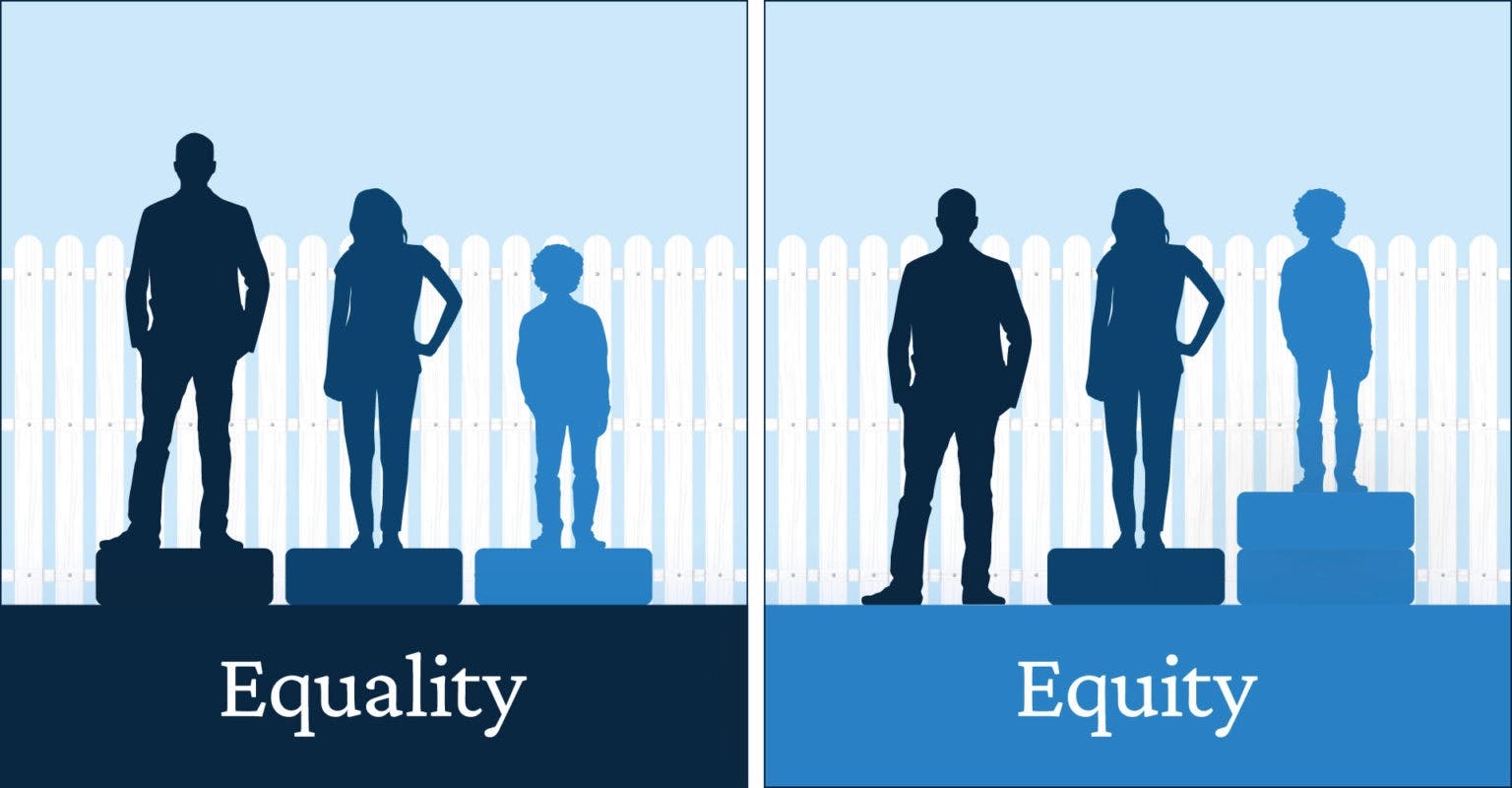Organizations committed to positive change in today’s working culture are taking action-oriented steps toward better diversity, equity and inclusion (DEI) practices. Diversity in the workplace is already a familiar concept to forward-thinking companies. But in recent years, increased awareness around social exclusions faced by people from marginalized backgrounds has prompted the term “equity” to be at the forefront of conversations around diversity and inclusion.
As business leaders continue to strategize how to foster a culture of belonging among their employees, they must add the idea of workplace equity to their leadership toolkit.
In this article, we’ll discuss the meaning of equity, why it’s important and how you can build an equitable working environment for your employees.
What is equity in the workplace?
Workplace equity is the concept of providing fair opportunities for all of your employees based on their individual needs. Before we dive into the details of what this looks like in practice, let's run through a couple of important definitions.
Equity vs equality in the workplace
Although equity and equality sound similar, they are not synonymous. To properly plan for a more equitable workplace, it's important to have a strong understanding of how these terms differ.
Equality seeks to provide all employees with access to the same resources, regardless of the pre-existing barriers they may face. This can refer to an equal distribution of money, resources or opportunities between workers at a similar level.
Equality is in many ways a beneficial concept that can push company culture in the right direction. However, it often fails to address problems of underrepresentation or an unfair status quo.
Equity is distinct from equality in that it doesn’t provide the same resources and opportunities to everyone. With equity, an organization will recognize that each employee has varying access to resources and privileges. And those with less access may need more support to take fair advantage of opportunities within a given company.

How do you show equity in the workplace?
Equity can be complicated to demonstrate in the workplace. This is because what constitutes fair and equitable treatment is often subjective and unique to the experiences of every individual employee.
However, an organization can show equity in the workplace by first recognizing this reality. Fostering an equitable workplace begins with cultivating a safe environment that allows for open discussion and understanding. We’ll talk more about specific steps to take towards equity in the next section.
How to implement equity in the workplace
Equity in the workplace is about “leveling the playing field,” and giving every employee the unique resources they need to have access to opportunities at a given organization. Here are a few ways you can implement a practice of equity within your company.
- Prioritize wage equity
Discussion of wages has been made taboo in the past, however, this allows bias in the form of wage disparities to slip through the cracks. Having transparency around wages and openly discussing correlations between employee performance, position and rate of pay are essential to ensuring fair compensation.
- Ensure diverse cross-level representation
Many organizations hire for diversity but fail to provide equitable opportunities for advancement to their diverse hires. When this happens, what we see is high diversity in low-paying and low-authority jobs, and over (or exclusive) representation of one demographic in leadership and management. Your company should empower diverse employees by giving equitable promotions and upholding diverse representation in executive positions.
- Invest in workforce education
Systemic barriers prevent especially Black, Indigenous and people of color (BIPOC), as well as disabled individuals from accessing education. This lack of access creates an enormous diversity deficit in many workplaces. By investing in a workforce education program, you’re providing your marginalized employees with a potentially life-changing resource that enables them to advance their careers and grow with your company. Fair education is the key to an equitable future in the workplace.
Examples of equity in the workplace
Here are seven examples of how you can enable an equitable working environment.
- Make job descriptions accessible
This means having transparency around the wage range for different positions, as well as providing a variety of avenues through which talent may access application materials (including non-web-based channels).
- Shift to skills-based hiring
Not everyone has access to higher education and this shouldn’t bar them from opportunities for work if they have the skills necessary to do the job. This is the gist of skills-based hiring. Instead of focusing on specific degree requirements in your hiring process, emphasize skills and previous work experience. Then, leverage your existing L&D resources to upskill and reskill these individuals for continuous career advancement.
- Provide inclusive incentives
Event-based incentives that center around alcohol or formal dress codes have the potential to alienate some employees. Financial or recognition-based incentives are a better way to reward top-performing team members and avoid exclusion.
- Provide equitable access for all employees
This not only means access to resources and opportunities but also physical spaces and materials. It is important to consider whether your meeting room is wheelchair-friendly, whether you have accurate closed captions on a video presentation, and whether your office space has adequate accommodations for employees with sensory sensitivities.
- Empower your employees
Even if you have all the best resources in place, it’s up to your employees to take advantage of them. For you, this means making sure your employees know about the resources, know how to access them and feel comfortable and safe doing so.
- Ensure equitable benefits
Spousal health insurance should be available to same-sex couples and non-traditional families as well as straight couples. Additionally, parental leave should extend to fathers and mothers equally.
- Re-evaluate your equity practices
Everyone makes mistakes and as we continue to take action against a problematic status quo it can be difficult to know what’s right. Organizations should continue to analyze and update their equity practices as new information is given.
Measuring equity in the workplace
There's no surefire method for accurately measuring equity in the workplace, which makes it challenging to know the impact of your efforts. A common tactic for understanding the state of equity in your organization is through employee satisfaction surveys or net promoter scores (NPS).
Here's an example of some survey questions you can include that specifically speak to equity:
- Do you believe you are treated fairly at work?
- Do you believe that your organization's promotion practices are fair?
- Do you believe that your compensation and benefits package is fair for your skills, level of experience and job responsibilities?
Additionally, it's important to collaborate closely with your people management team and train them on how to have open conversations about DEI with their direct reports. Managers are in a unique position to build trust with their teams and solicit honest feedback.
The path forward for equity at work
Equity, the practice of meeting the unique needs of individual employees, is a vital concept for today’s workforce. Implementing equitable actions in your organization has the potential to change the lives of your employees and affect positive change in the wider world.
Ready to take greater action on DEI? Download this free diversity presentation template to access industry benchmarks, project roadmaps and other useful tools to power your DEI strategy forward.


